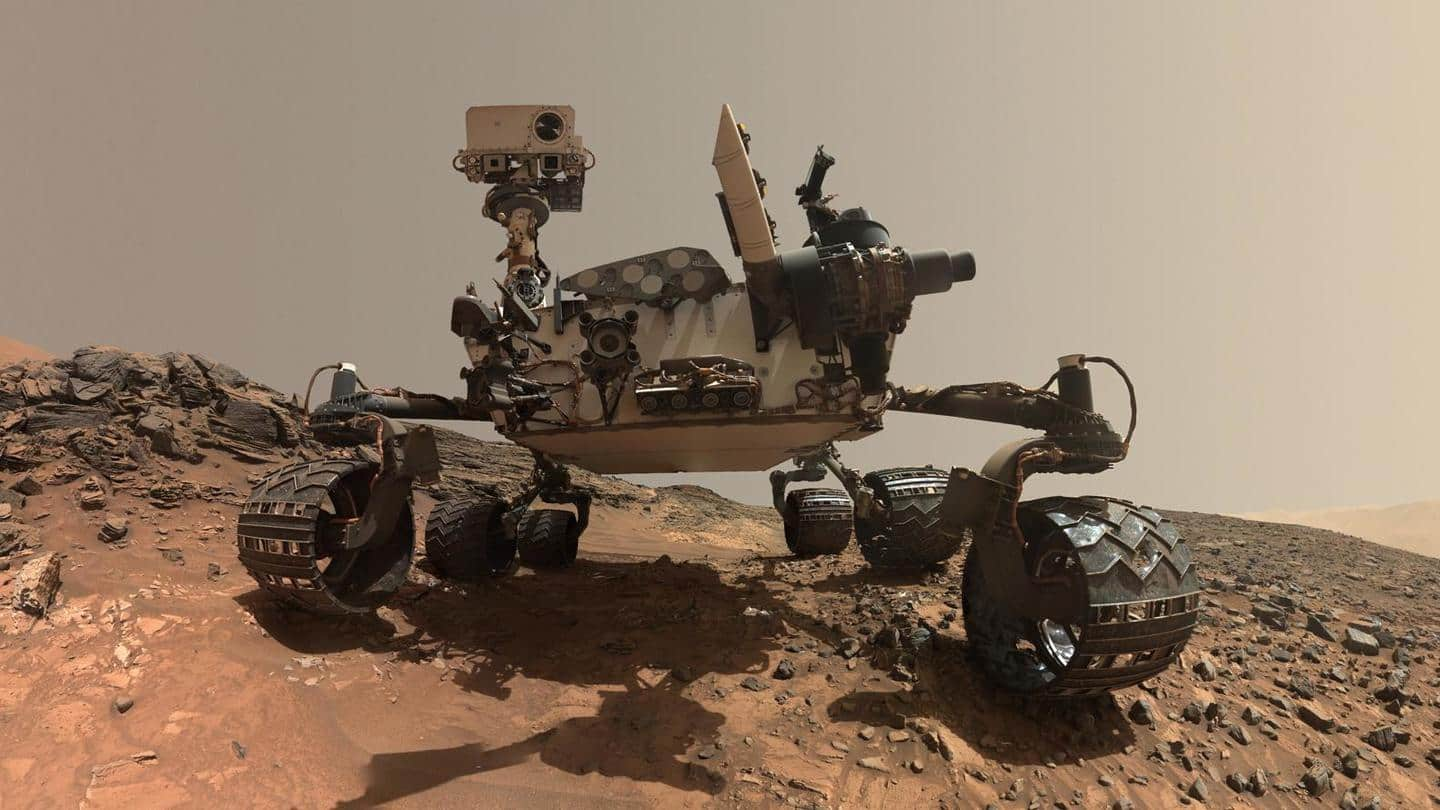
NASA's Curiosity measures organic carbon in Martian rocks
What's the story
For the first time, scientists have used data from NASA's Curiosity rover to measure organic carbon in Martian rocks.
Organic carbon or carbon bound to a hydrogen atom is a key component in life molecules.
It is created and used by all forms of life. Although its presence itself is not proof, this gives scientists more insight into the question of life on Mars.
Context
Why does this story matter?
Human beings have been looking at Mars as a potential candidate for the presence of life since the '60s.
The development of astrobiology over the years has helped us in looking at more factors than ever to determine whether our red neighbor ever had life or not.
Using data from Curiosity to measure organic carbon on the planet is another major step for astrobiology.
Why
Why are scientists taking inventory of organic carbon on Mars?
Evidence shows that Mars had Earth-like climate billions of years ago with a thicker atmosphere and liquid water. Since water is necessary for life, if Martian life ever existed, it could have been sustained by key components like sufficient amounts of organic carbon.
Organic carbon has been found on Mars previously as well, but we have never calculated the total amount present in rocks.
Date
Gale crater has a habitable environment for life
Curiosity rover drilled samples from 3.5-billion-year-old mudstone rocks with organic carbon in the Yellowknife Bay formation of Gale Crater. This site also had an ancient lake.
The crater also had other conditions suitable for life, including chemical energy sources, low acidity, and other essential elements like oxygen, sulfur, and nitrogen.
Scientists believe that this location would have offered a habitable environment for life.
Experiment
How was the experiment conducted?
Curiosity delivered the collected samples to its 'Sample Analysis at Mars' (SAM) instrument. An oven heated the powdered rock to progressively high temperatures and used oxygen and heat to convert it into carbon dioxide.
This experiment allowed SAM to measure carbon isotope ratios. Organic carbon is rich in Carbon-12 and by measuring that, scientists determined the amount of organic carbon in the rocks.